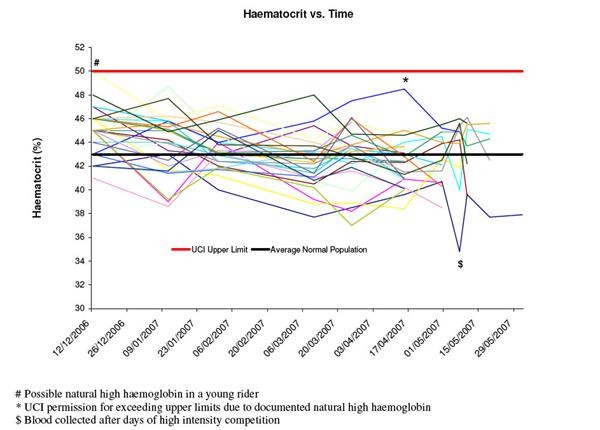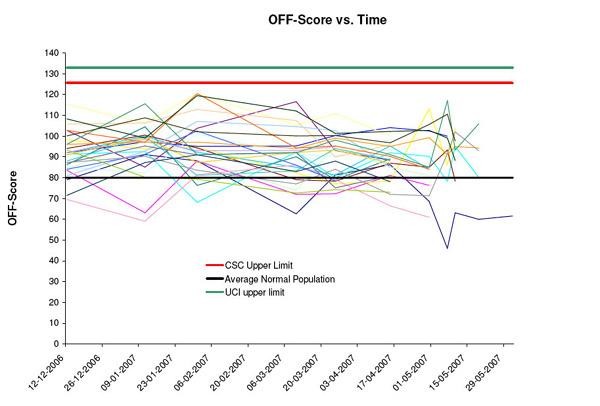CSC releases internal testing results
Team CSC took the unprecedented step of releasing internal medical controls for its 28 riders today....


Team CSC took the unprecedented step of releasing internal medical controls for its 28 riders today. The team's antidoping programme is touted as a novel and transparent process with three goals: "To catch cheaters and detect doping, to set entirely new standards for the future fight against doping and to maintain the health and integrity of the riders," according to the physician in charge of administering the regime, Dr. Rasmus Damsgaard.
The programme was credited with saving the team's sponsorship by computer company CSC after director Bjarne Riis admitted to using banned substances during his career. "We want to play a big part in creating a healthy future for cycling and with the implementation of this program as well as the test results being made public today, we have taken a giant leap in the right direction," said Riis.
The team issued a press release containing graphs which summarise the results of the tests, but lack more detail. The graphs chart the riders' haematocrit, haemoglobin, and "OFF" scores from December until the end of May. According to the document, "The OFF-score is an equation containing haemoglobin and reticulocytes (the immature red blood cell). By combining the two variables it is possible to determine whether an athlete has used EPO or even performed (autologous) blood transfusion procedures."
Most of the charts appear to have values in the range of the normal population with a few outliers. One rider returned a haemoglobin and haematocrit value near the UCI limits in December, but those values quickly declined to normal levels once the season started.
"It is known that haematocrit and haemoglobin is higher at the beginning of the competition season and then declining in well-trained athletes," explains the document. "In addition, the extent of non-sport specific modalities such as illness, high altitude training, use of hypoxic chambers, overseas flights etc. influencing blood variables is not easy to establish. Thus, the variations in some elite athletes may express higher values than for normal, healthy people."
The chart of the OFF-scores show all riders being well below the UCI limit of 133, and also below the Team CSC cut-off of 125.6 - a value suggested by the developers of the test.
According to the statement, the collection of test samples were carried out unannounced, and mainly out-of-competition (85% of all tests), and performed under WADA guidelines and analysed in WADA-accredited laboratories. The results have also been made available to the UCI, providing additional incentives for the riders to stay away from doping.
Get The Leadout Newsletter
The latest race content, interviews, features, reviews and expert buying guides, direct to your inbox!
"The UCI has access to all testing plans and outcomes," said UCI president Pat McQuaid. "Results are managed by the UCI in accordance with UCI rules."
"More importantly, Team CSC is making genuine efforts to change its team culture so that riders no longer feel the need or pressure to dope. The combination of CSC's strong antidoping programme with their equally strong culture of hard, clean riding is certainly an example for other pro teams to follow," said McQuaid.
Graphics
For a thumbnail gallery of these images, click here
Images by Team CSC
- Hemoglobin vs. time for CSC riders
- Hematocrit changes over time in CSC's riders
- Variations
- "OFF" scores for the CSC riders over time